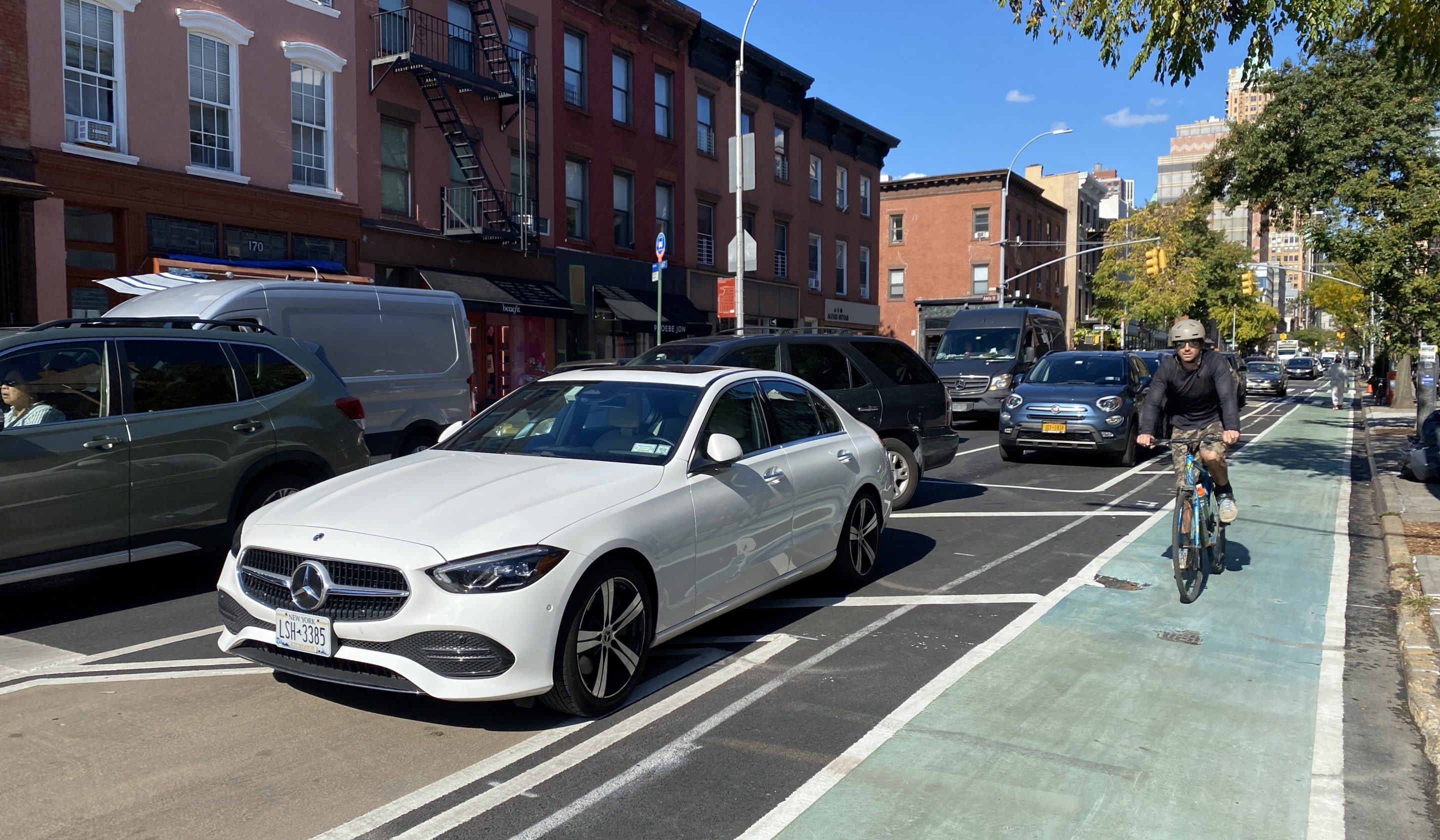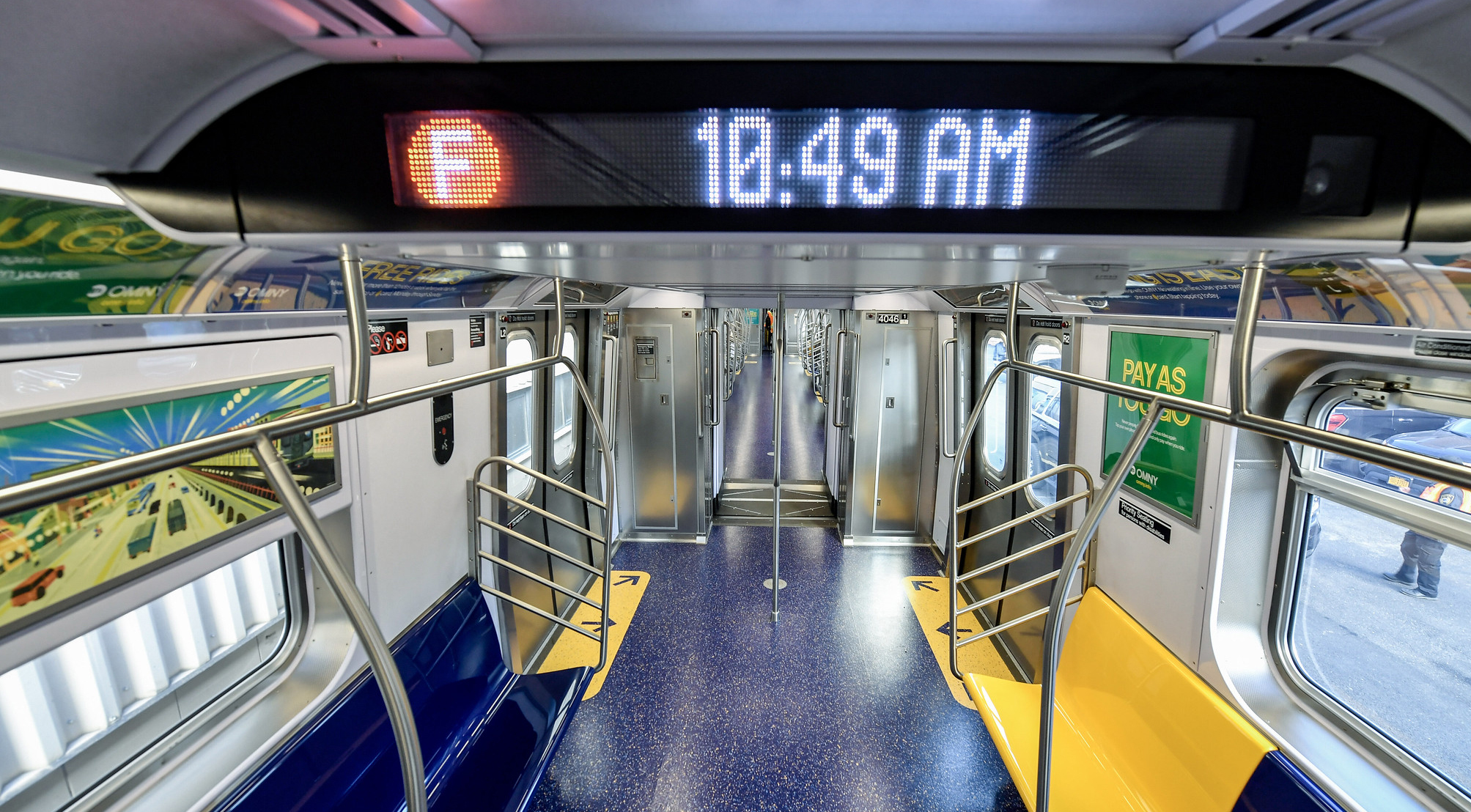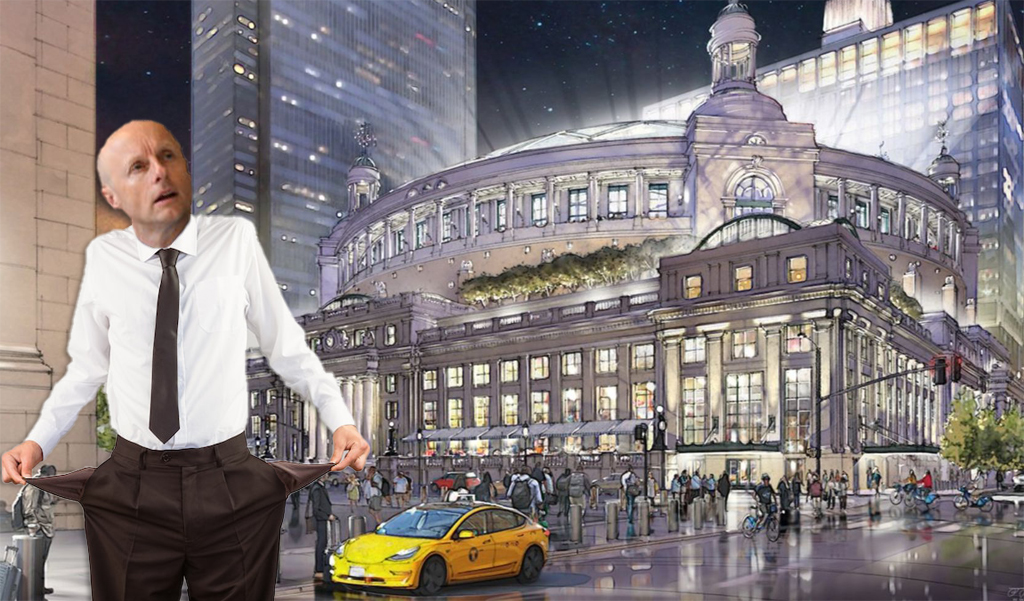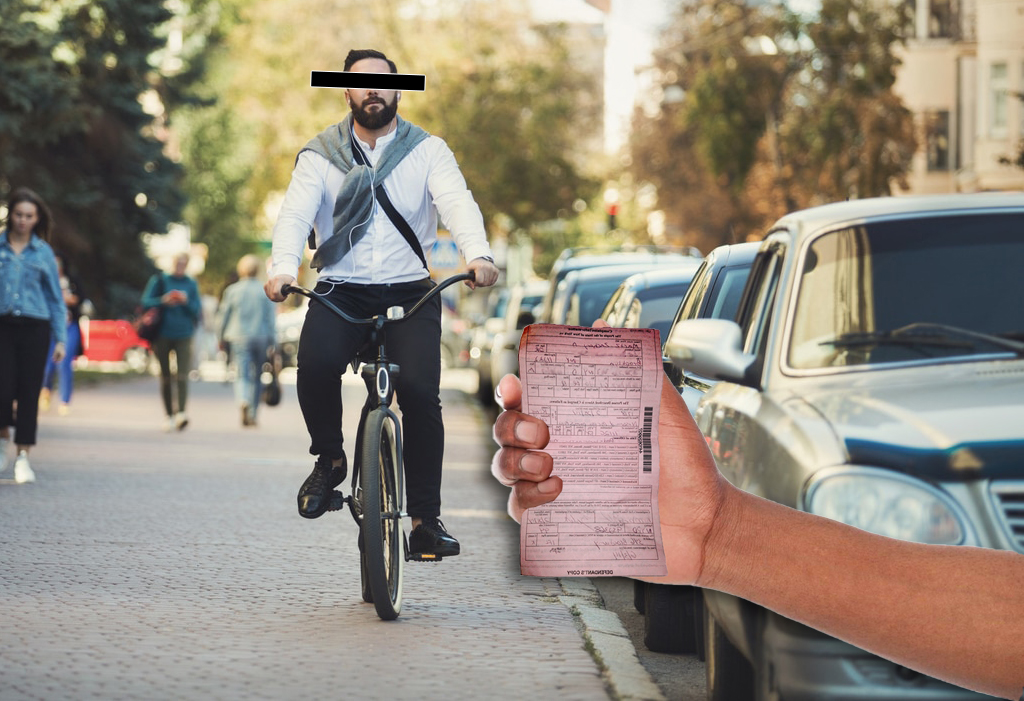The city's new protected bike lane on Court Street in Brooklyn has already established a safe and reliable cycling connection on one of the most dangerous streets in the borough, but that hasn't stopped a coterie of locals seeking to undo the changes with the same predictable complaints.
The project created a protected bike lane by removing one of two moving lanes on a roadway that previously funneled cut-through traffic for the Brooklyn-Queens Expressway into a quiet brownstone neighborhood.
"Court Street is a neighborhood street with schools, churches and businesses. It shouldn’t be an extra lane of the BQE," said Doug Gordon, the co-chair of the local Community Board 6's Transportation Committee. "Why are we treating neighborhood streets as a release valve for a highway?"
DOT proposed the project in the spring and began striping new configuration in September along the 1.3 miles from Schermerhorn Street to Hamilton Avenue below the BQE. Automobiles still get three lanes for their movement and storage, so the street is still mostly a car thoroughfare, but the change has already been noticeable and garnered praise among locals and in national media outlets.
Danger zone
The corridor was among the most dangerous roads in Brooklyn, with 155 people injured in five years through 2024, including two fatalities, clustering around dangerous intersections like Hamilton Avenue and at Atlantic Avenue, according to Department of Transportation data.
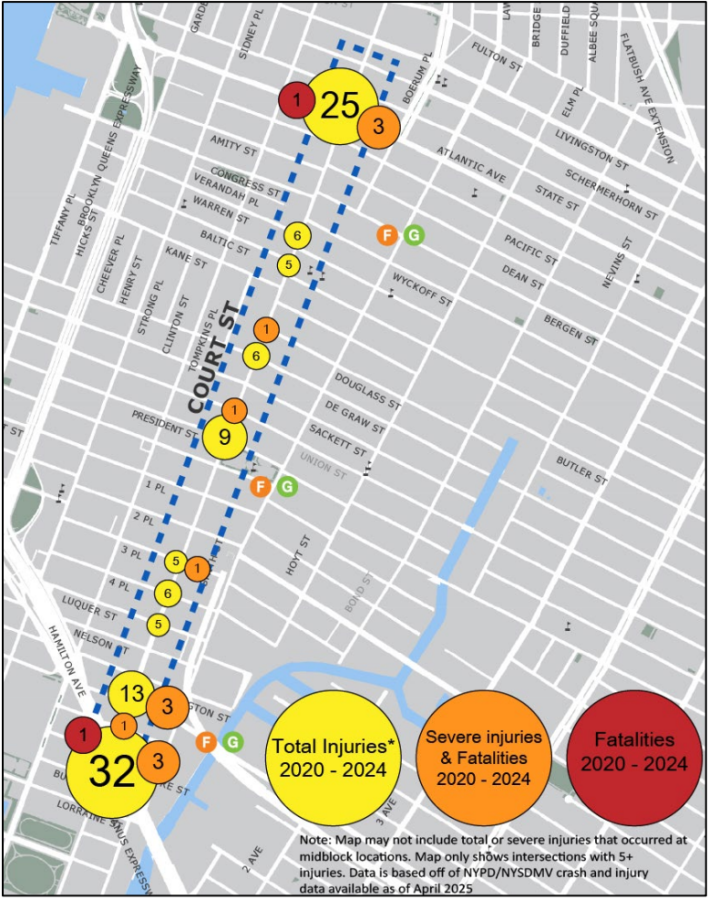
The Mad Max-style corner at Hamilton Avenue below the elevated BQE has long been a troubled spot that the city has failed to fix. In 2021, a hit-and-run driver killed Red Hook resident Imorne Horton who was simply trying to walk home.
Court Street was never truly two lanes for driving, as one or the other was frequently blocked by a double-parked truck or car. The congestion encouraged frustrated drivers to regularly make aggressive turns at corners, resulting in 57 percent of the injuries occurring in crosswalks, DOT stats show. And all that swerving around illegally parked cars caused a rate of sideswipe crashes twice the borough-wide average.
Yet cyclists often used Court Street anyway because there aren't many alternate southbound bike lanes nearby, while two northbound unprotected bike paths carry heavy cycling traffic on Smith and Clinton streets. DOT counted a whopping 1,000 cyclists using Court Street on a day in October of last year.
The agency has deployed redesigns like this protected bike lane across the city for two decades now, and they have statistically shown to boost business and street safety for all road users.
Protected bike lanes reduce crash injuries by 15 percent overall, including 18 percent among pedestrians and 22 percent for senior pedestrians, according to DOT data.
They provide a clear emergency lane when the main car lane is blocked. Parallel streets (Smith and Clinton) are already single lane for cars as well.
Streetsblog went to check out the bike lane Wednesday afternoon so we could provide context to the revanchist effort to remove a bike lane that isn't really even done yet.
Order in the court
The bike lane starts at Schermerhorn Street, which got a good (though sometimes blocked) two-way protected bike lane and road diet in 2022. But for some reason (New York City exceptionalism?), that east-west path ends a block short of Court Street, missing out on creating a full connection.
But the Court Street path does connect to the busy unprotected bike lanes that go east to west on Dean and Bergen Streets, and Union and Sackett Streets.
Motorists were often blocking the brown-painted no parking zones on corners that would provide better visibility, also known as daylighting.
The DOT emphasized that it has not finished all of the markings yet, but the bike lane and road diet were already in effect. The agency also plans to build out protections there and install plastic bumps to slow turns at corners.
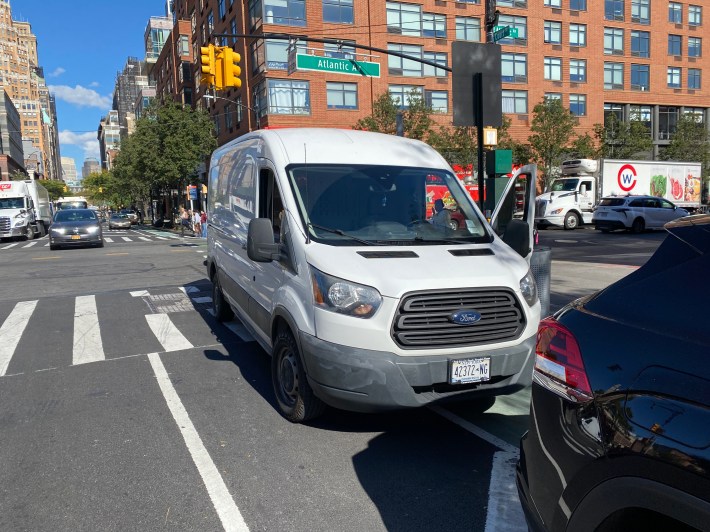
At other locations, painted pedestrian islands were working as intended, giving walkers a much shorter crossing distance, like at this T-intersection at Warren Street.
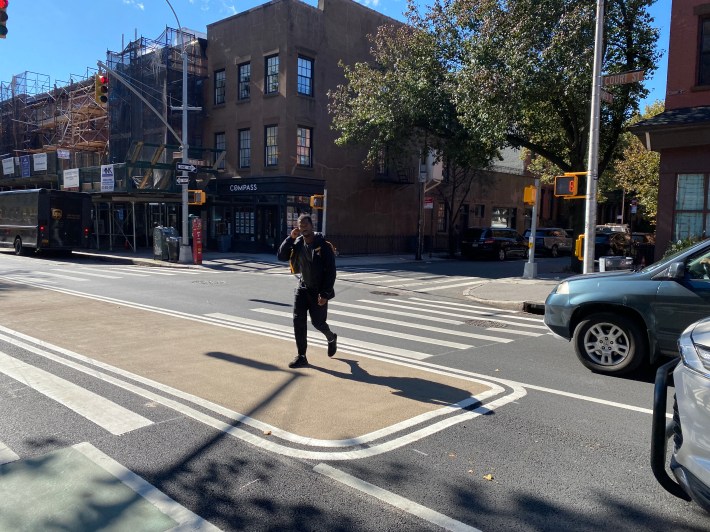
Meanwhile at Baltic Street, several school buses were parked in the bike lane and the daylighting spot at the corner, endangering cyclists and pedestrians at the corner right across the street from a school. Not a great look from professional drivers tasked with safely transporting children.
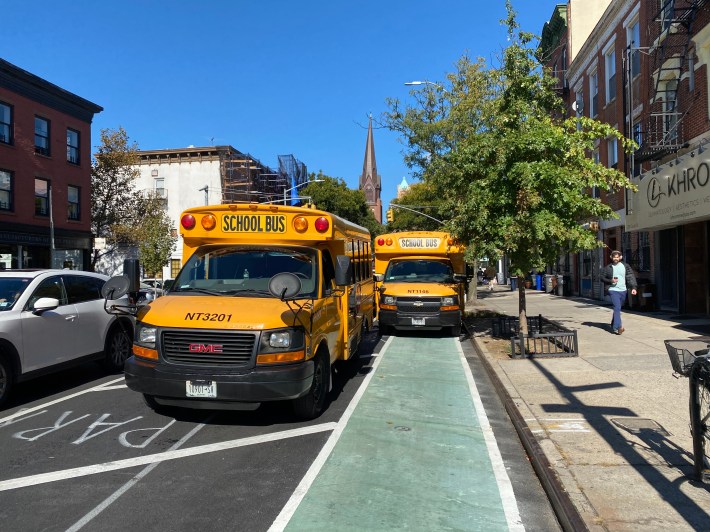
The bike lane was well used, even on sections where DOT had not finalized its work. Car traffic, meanwhile, became pretty quiet south of Carroll Park.
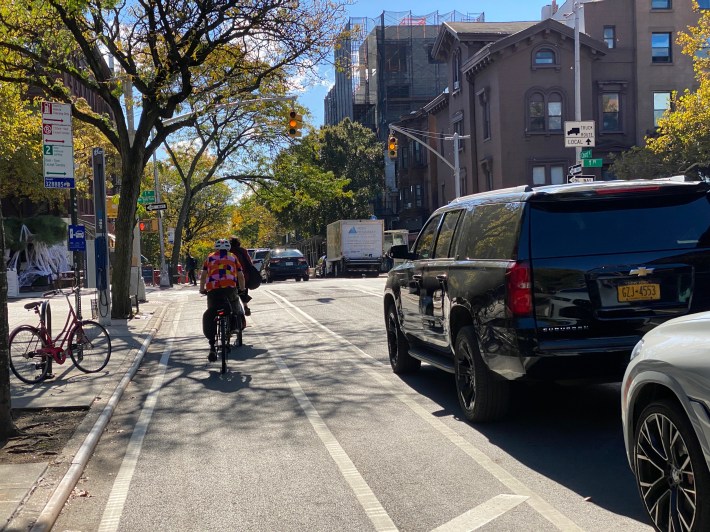
At the southern end near Hamilton Avenue the markings were still only stenciled so far, but motorists seemed to have gotten the message about the changes and kept the future curbside bike lane free.
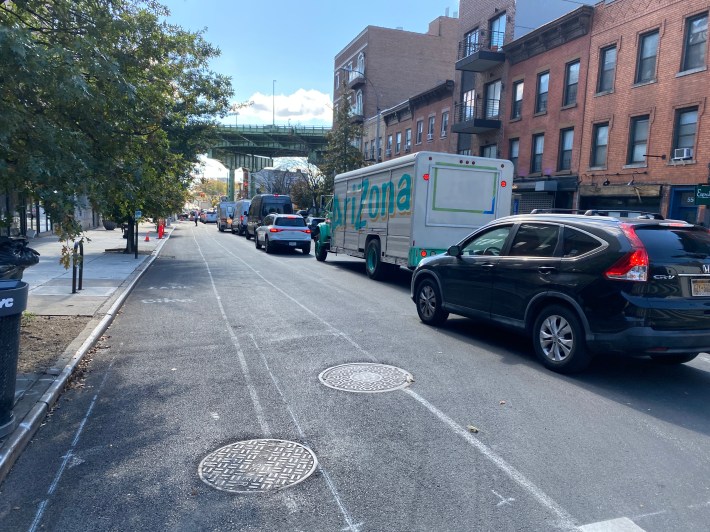
DOT maintained two moving lanes at a few busier sections, between State Street and Atlantic Avenue, and from W. Ninth Street to Hamilton Avenue.
Only about two-and-a-half spots formerly occupied by car storage are now put to more beneficial use, such as daylighting or pedestrian islands.
Bikelash
Road diets have become common and successful in New York City, but the Court Street bike lane has already triggered backlash among some locals, who protested outside Mazzone's Hardware for a TV news crew earlier this month.
A group called the Court Street Merchants Association has also launched an online fundraiser to "challenge" the redesign. The group has not identified any traffic engineer or urban planner that is advising it. (Update: The group did file suit late on Friday, the Brooklyn Eagle reported, citing many of the same false, and debunked, claims that the DOT has heard since its epic Prospect Park West bike lane battle in 2009.)
The organization claimed on Facebook that its members "support safer streets, but not this design," a common refrain from opponents of street safety projects that are intended for "their" streets.
A leaflet claimed that emergency vehicles were being blocked by the new design, deliveries are being hindered, pollution and congestion are on the rise, and that the bike lane "hurts small businesses," though there is no evidence of any of those things.
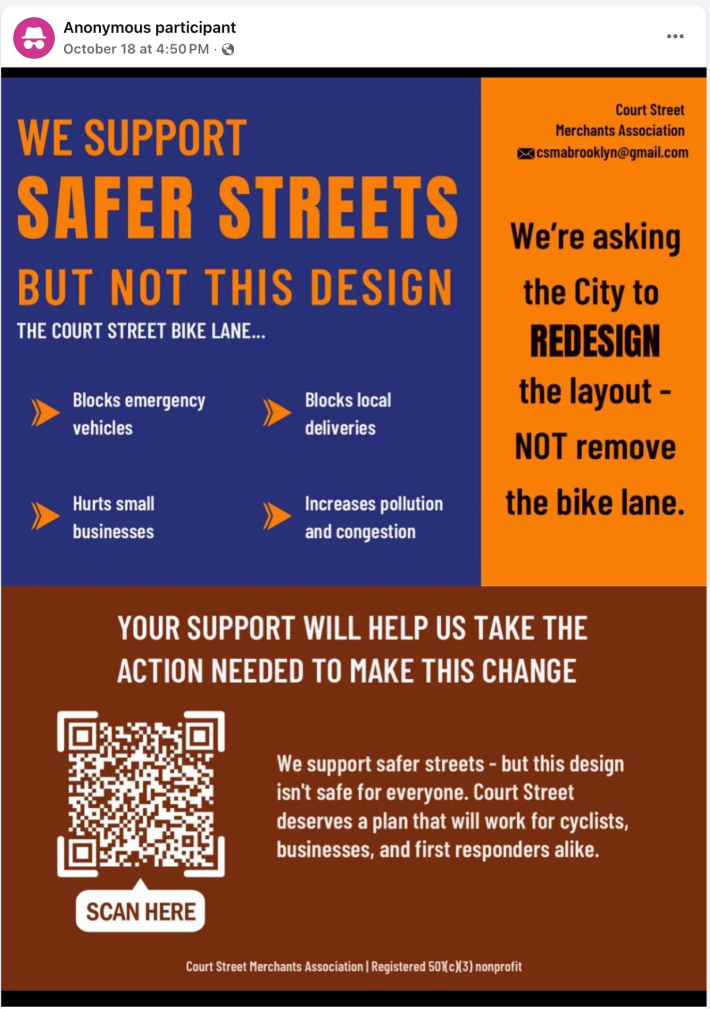
The Merchants Association bills itself as a "registered 501(c)(3) nonprofit," but it's unclear if the group is actually still a tax-exempt organization. Its information did not show up on either federal or state charity databases, according to a Streetsblog review of the Internal Revenue Service and the state Attorney General's Office registers.
The group's website appears to have been inactive since around 2013.
The Association did not respond to an email seeking comment.
Mazzone's owner, Matt Mazzone, also said that he backed a bike lane, but that the city should meet with locals to address "challenges."
"Personally, I support a bike lane and agree it is needed, however, there are a long list of challenges that have arisen since its implementation, with no willingness for any local elected officials or DOT to discuss the actual design, or the new parking regulations," Mazzone told Streetsblog in an email.
He declined to specify how the design should change, and said he did not want to speak on behalf of the merchants group.
DOT surveyed businesses along the corridor in March to "understand their loading needs," and presented the plan to both local Community Boards 2 and 6 in June.
Mazzone said he spot-checked by speaking to 40 or so business owners who told him that they had not been not consulted. It is unclear if any of those businesses include a traffic engineer or urban planner.
"The DOT never surveyed any businesses that I’m aware of," Mazzone continued. "I cordially reached out to the DOT and elected officials to open a dialogue; those requests went unanswered – which I think we both would agree is a shame. I believe everyone’s opinions should be valued and taken into consideration when a community undergoes such a drastic change."
Gordon, who also co-hosts the podcast "War on Cars," said resistance has become a predictable part of street redesigns, but added that the changes usually end up working out after people get used to them.
"Same story, different neighborhood," he told Streetsblog. "We’ve gone through this all time in pretty much every borough and the real lesson is usually everything is fine in the end."
Some locals on the street told Streetsblog they loved the new addition of safe cycling infrastructure.
"I’m a fan of the bike lane, I think there should be way more," said John Kim, who has worked in the area for three years. "I think it does just fine with one [car] lane.”
Gordon said if businesses are concerned about deliveries, for example, the city could always convert more space along the curb to commercial delivery zones or tweak parking meters.
"The answer is not to get rid of the bike lane, the answer is to install more loading zones and meters so there’s more turnover," he said.
And to Mazzone's point about community engagement, members of the community board actually called for the city to go further, including by adding more hardened daylighting and better bike connections off Court Street, Gordon said.
"Court Street now becomes a really important link for cycling that hopefully can continue to grow so that everybody can take advantage of riding a bike," Gordon said.
DOT spokesperson Vin Barone noted that the bike lane is not yet finished, and said the agency will still add paint and hard infrastructure to fortify pedestrian islands and other spaces, including boulders, bike corrals and plastic sticks.
